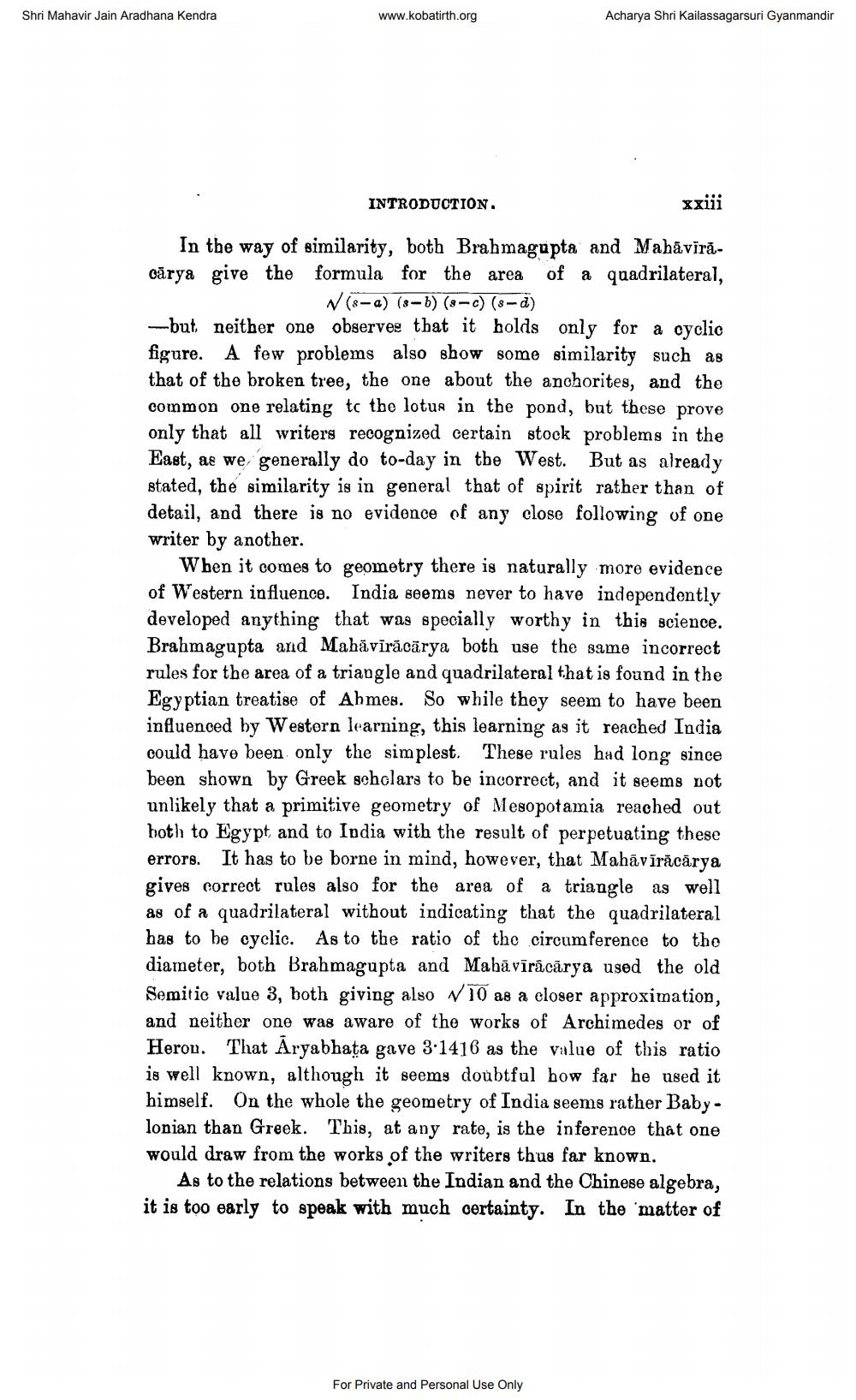________________
Shri Mahavir Jain Aradhana Kendra
www.kobatirth.org
Acharya Shri Kailassagarsuri Gyanmandir
INTRODUCTION.
xxiii
In the way of similarity, both Brahmagupta and Mahāvīrăcārya give the formula for the area of a quadrilateral,
N (-a) (8-6) (8-c) (8-d) but neither one observes that it holds only for a cyclic figure. A few problems also show some similarity such as that of the broken tree, the one about the anchorites, and the common one relating to the lotus in the pond, but these prove only that all writers recognized certain stock problems in the East, as we generally do to-day in the West. But as already stated, the similarity is in general that of spirit rather than of detail, and there is no evidence of any close following of one writer by another.
When it comes to geometry there is naturally more evidence of Western influence India seems never to have independently developed anything that was specially worthy in this science. Brahmagupta and Mahāvīrācārya both use the same incorrect rules for the area of a triangle and quadrilateral that is found in the Egyptian treatise of Ahmes. So while they seem to have been influenced by Western learning, this learning as it reached India could have been only the simplest. These rules had long since been shown by Greek scholars to be incorrect, and it seems not unlikely that a primitive geometry of Mesopotamia reached out both to Egypt and to India with the result of perpetuating these errors. It has to be borne in mind, however, that Mahāvīrācārya gives correct rules also for the area of a triangle as well as of a quadrilateral without indicating that the quadrilateral has to be cyclic. As to the ratio of the circumference to the diameter, both Brahmagupta and Mabā vīrācārya used the old Semitic value 3, both giving also v 10 as a closer approximation, and neither one was aware of the works of Archimedes or of Heron. That Aryabhata gave 3.1416 as the value of this ratio is well known, although it seems doubtful how far be used it himself. On the whole the geometry of India seems rather Babylonian than Greek. This, at any rate, is the inference that one would draw from the works of the writers thus far known.
As to the relations between the Indian and the Chinese algebra, it is too early to speak with much certainty. In the matter of
For Private and Personal Use Only




